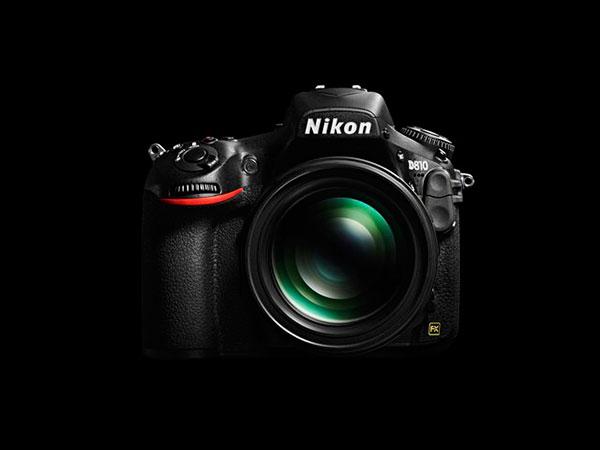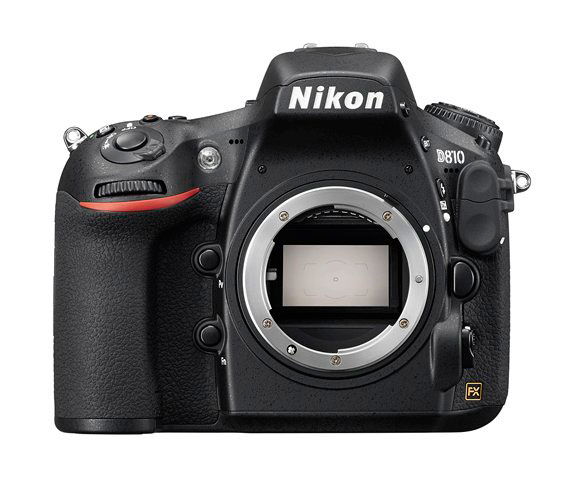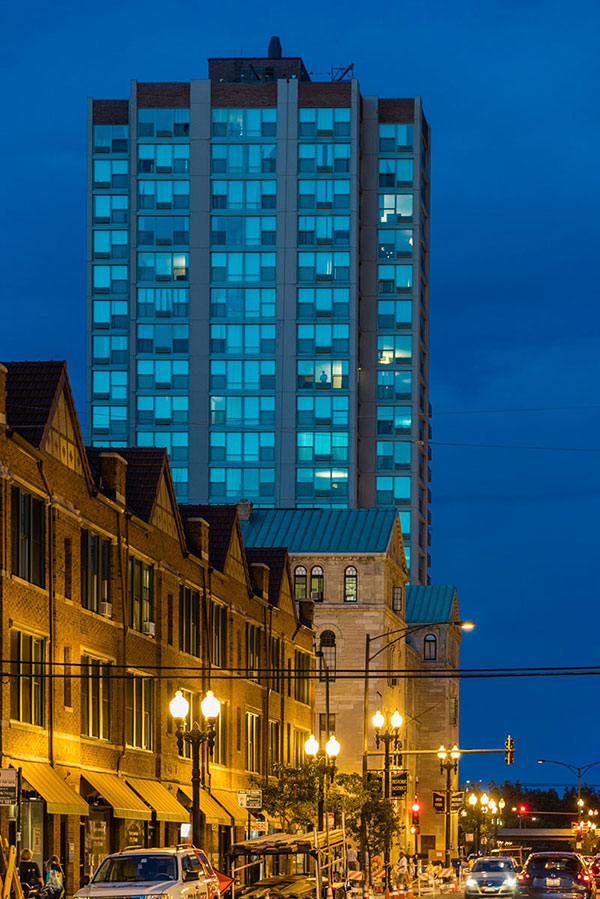First Look Review: Nikon’s 36.3MP D810 Full-Frame Pro DSLR

(Editor’s Note: Shutterbug contributor Jack Neubart has been testing the new Nikon D810 pro digital SLR. Here’s his hands-on “first look” at the camera. His full review of the D810 will appear in an upcoming issue of Shutterbug magazine.)
I became a Nikon convert back when the D300 was first introduced in 2007. I appreciated the camera’s handling, but mostly they got me with the Creative Lighting System, or CLS. Specifically, on the D300 it was the fully integrated wireless Commander mode via the built-in flash that grabbed my attention.
But I wasn’t entirely happy in the APS-C sensor realm. I wanted a full-frame DSLR and the affordable D600 made that possible. With it’s built-in flash, the D600 let me continue to enjoy wireless flash photography sans peripherals, other than an SB-900 Speedlight.

The new 36.3-megapixel Nikon D810 ($3,296) full-frame pro DSLR builds on that, sporting its own pop-up flash. I even built up my arsenal of FX-compatible lenses. I was largely done with having to extrapolate focal lengths and handholdable shutter speeds around a cropped sensor.
More importantly, with the full-frame sensor, especially the one in the D810, I have the real estate to crop and still have plenty of image to play with. That’s especially relevant when correcting perspective in architectural shots in Lightroom. With the D810’s 36.3 million pixels occupying a CMOS sensor measuring 35.9 x 24mm (FX-format), you can take in the entire structure with plenty of room to spare to fully correct for converging verticals without fear of chopping off vital structural elements, such as the top of a bell tower.
(Editor's note: Nikon recently announced the 24.3MP D750 full-frame DSLR, which is the step down model from the D810.)

The D810 Under the Hood
The new Nikon D810 steps up to the plate with the potential to play in the major leagues, whether you shoot stills or video. On the face of it the camera may not appear much different from its series progenitors, but it’s what’s under the hood that really counts. And judging by what’s in there, we have much to look forward to. (If you’re interested in a comparison between the D810 and D800/D800E feature for feature, use this link.)
For starters, the D810 is driven by the new Expeed 4 engine. Specifically, Nikon notes that Expeed 4 delivers 30% faster performance than Expeed 3 (which inhabits the D800/D800E) and delivers up to roughly 1200 shots per charge and 40 minutes of video recording on the same EN-EL 15 Li-Ion battery pack that the D800/D800E uses (the same one, by the way, that’s found in the D600/D610).
The ISO range has been extended down to ISO 64 and as high as 12,800 (excluding extrapolated values). Video enthusiasts should appreciate that Expeed 4 supports 1080 60p video capture (compared with 30p on the D800/D800E). Aside from that, there are additional video enhancements that extend beyond the Expeed 4 engine.

Frame rates have increased as well, to 5 fps (frames per second). OK, this is where the sports analogy falters, since the D4S, with its 11 fps frame rate, is the decided choice for sports shooters. But you get 36MP resolution on the D810, compared with a mere 16 on the D4S.
Of greater importance to many would be the internal sharpness boost at the source. Nikon removed the veil clouding the sensor. The D800E advanced this concept by removing anti-aliasing from the optical low-pass filter. The D810 goes this one better, by entirely eliminating the optical low-pass filter, thereby taking sharpness to the next level.
We’ve just scratched the surface, but I like where this is going. The thoughtful and practical design behind the D810 confirms my decision to switch to Nikon some years back.
First Impressions
Now, I work primarily with the D610, which I love and would never have considered replacing until the D810 came along. The D810 is as much an extension of my hand and my vision as the Nikon DSLRs I currently own. The interface is largely reminiscent of my old D300, while departing very little from the D800/D800E. Everything falls naturally in place. (Note: for this First Look, I tested the D810 with the AF-S Nikkor 24-120mm f/4G ED VR, which retails for $1,296.)
The D810 sports a beautiful grip. Fingers fluidly wrap around it, with my index finger poised and at the ready on the shutter release and my thumb resting comfortably within easy reach of the AF-ON button that I use for focusing. There’s a new “i” button, not to be confused with the “Info” button (both are on back). The “i” button is used to gain quick access to numerous settings during playback and capture.

Various buttons can be user-defined, the AF-ON button among them. So, for example, I set the AE-L/AF-L button for highlight-weighted metering (a new feature). I set the Fn (“Fun”ction) button so I could effortlessly activate the virtual horizon in the optical viewfinder, letting me enjoy the picture-taking experience even further.
What effect does removal of the anti-aliasing filter have? I’ll be taking a closer look in my upcoming report. For now, I can readily state that I was quite pleased with color balance under AWB (auto white balance). Digital noise was also well contained.
I haven’t tested the movie functions as yet. But it’s worth noting that the D810 supports mirroring via the HDMI port. More importantly, the camera lets you record uncompressed video externally while also storing compressed video internally, on SD/CF card. What’s more, the D810 supports an external stereo microphone. While a stereo mic is built in, you tend to avoid it because this microphone captures every bit of noise made at the camera.

Concluding Remarks
There is lots more under the hood of the Nikon D810 to enthrall D800/D800E, as well as D600/D610, users and certainly APS-C enthusiasts. We haven’t even mentioned or only alluded to enhancements to autofocusing and exposure, and much more besides. And what may seem truly remarkable is that all this comes in a user-friendly package that’s neither bulky nor heavy.

Yes, expect a learning curve when switching over from a completely different system. But if you’re already a serious Nikon user, that learning curve is practically non-existent. And did I mention how quiet the camera is? That’s one of the first things I noticed. And no kick when releasing the shutter. So, is Nikon batting a homerun with the D810? Well, that’s what our full report will reveal. Stay tuned…
For more information, visit: www.nikonusa.com
Price (street): Nikon D810/$3,296; AF-S Nikkor 24-120mm f/4G ED VR/$1,296
(Jack Neubart is a photographer, photo-technical writer, educator, photo industry consultant, and author with over 35 years of experience, covering practically every aspect of photography. His website www.jackneubart.com showcases samples of his work, whereas his other website, www.pixelPERFEXION.


- Log in or register to post comments

















































